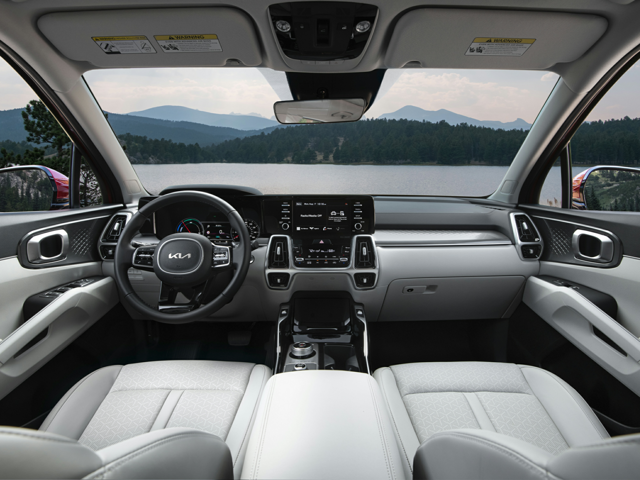
Your Kia’s radiator has the important role of removing heat from the engine and replacing it with cooler air from the outside. The fast-moving engine components and combustion process generate large amounts of heat, which must be removed to prevent engine damage. As your Kia dealer, we’d like to tell you about some of the signs that you may need to visit us for a radiator repair.
Coolant Leak
Coolant is a mixture of water and antifreeze, and its purpose is to collect heat from the engine and transport it to the radiator for removal. The coolant operates under high pressure and at high speed, and the flow of coolant can be increased or decreased depending on the engine temperature. The high pressure, heat, and age can damage parts of the cooling system, and this can cause leaks.
Worn seals, old radiator hoses, and rust on the radiator are three places coolant can leak from. If you spot a pool of pink, green, yellow, or blue liquid under your car, this confirms you have a coolant leak. If the leak continues, the engine temperature will rise to dangerous levels, and sensitive components like the head gasket and engine seals will be damaged. We’ll trace the leak and seal it, then refill the coolant.
Worn Radiator Cap
The radiator cap is tightly secured to the top of the radiator. It helps to maintain a high pressure in the cooling system and to prevent leaks. The fast movement of hot coolant can increase the pressure in the system. If this happens, the radiator cap temporarily opens to bleed off the excess pressure and then closes again.
The cap is tightly screwed into the radiator and has two seals to ensure that the cooling system remains airtight. Over time, the heat and pressure can damage these seals, and coolant will leak out. Leaking coolant causes the system pressure to fall, which slows down the movement of the remaining coolant, and your engine temperature will rise. We’ll examine the cap and its seals and repair or replace them to fix this issue.
Failed Thermostat
Coolant doesn’t automatically start flowing when your engine starts, as this would cause it to run too low a temperature to work efficiently. When the engine temperature reaches 185 F to 230 F, the thermostat registers this and opens to release coolant. The coolant is then pumped through the engine at high speed to maintain a safe operating temperature.
An older thermostat can wear out and jam. If the thermostat jams closed, it won’t release coolant, and if it jams open, the engine temperature will drop too far, and you’ll use more gas. We can quickly replace the broken thermostat to fix this problem.
If your engine seems to be running hotter than it should, contact us today at Courtesy Kia.




 Warranties include 10-year/100,000-mile powertrain and 5-year/60,000-mile basic. All warranties and roadside assistance are limited. See retailer for warranty details.
Warranties include 10-year/100,000-mile powertrain and 5-year/60,000-mile basic. All warranties and roadside assistance are limited. See retailer for warranty details.